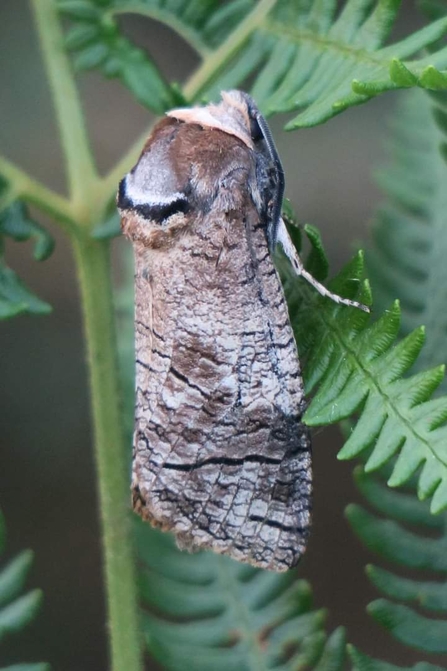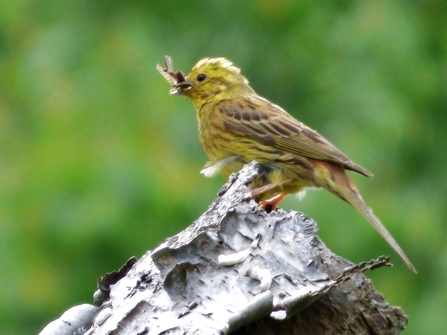The heathland is buzzing with insects, vibrant with flower power, as the cross-leaved heath continues, the ling comes into full bloom, the devil’s bit scabious starts, while gleaming yellow tormentil continues to power on. It’s been very dry. The volunteers have been scything bracken, clearing paths, fixing broken water pipes, replacing gate posts and repairing lots of fences. In late June immediate reserve neighbours Kim and Peter treated the team to another delicious BBQ, with the added pleasure of a video call from former warden Christina Juan, now in Costa Rica.
Moth experts David Rayner and Terry Dunk continue to trap, record then release moths regularly. On 11 June they trapped 247 moths of 45 species. Terry reported:
124 of the count was a micro moth green oak tortrix (Tortrix viridana). When I say 124 - that's all we recorded. The traps and surrounding area were full of them so impossible to record every one.
The yellow-green caterpillars of this moth are important food for young blue tits, the more they can eat, the better their greenish-yellow plumage. The catch of that night was the goat moth (Cossus cossus), which is listed as a Nationally Scarce species. The heaviest UK moth, its larva, which smells of goat, spends up to five years burrowing into and eating the wood of broadleaved trees like oak and ash.


